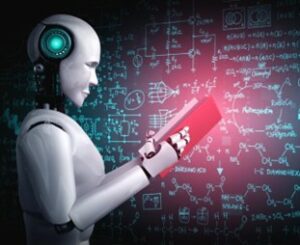Why is applying Artificial Intelligence in Construction so difficult?
The current state of artificial intelligence research allows us to design AI systems able to provide solutions for one specific objective. The type of data that is fed into such a ‘narrow AI’ system determines the range of possible outputs. For example, if you try to train a machine vision system to recognise pictures of shoes, but you only feed in pictures of trainers then the system is unlikely to classify a picture of high heels as shoes.

When we talk about robots taking over the world (or watch ‘the Terminator’), what we typically have in mind is Artificial General Intelligence (AGI), which is capable of applying knowledge in one area to solve a problem in a new unrelated area, increasing the scope of possible objectives that can be achieved. AGI doesn’t exist yet, depending who you ask you may hear that it will take anywhere from 38 years from now to never.
The construction industry projects typically have multiple objectives by their very nature. You want your house to be spacious, robust, ideally not too expensive, but also built with a minimum possible carbon footprint. What needs to be optimized is also typically a whole range of aspects of the build, taking an example of a simple timber floor you need to take into account joists, beams, decking sheets, metalworks, stairs openings, internal walls. We are trying to solve multiple layers of optimization with a multi-objective function, which is difficult for narrow AI.
DAISY AI and Autodesk Research are both trying to tackle this problem for various areas of construction. DAISY’s design engine focuses on optimizing timber layouts, i.e. minimizing the amount of wood we need to build our homes. Initial results show that optimized timber floor designs achieved using DAISY AI require 20% less timber material than the sub-optimal results. Does this mean that we could in theory cut 20% fewer trees to build our homes?
The objective function is typically set to minimum material costs, but other objectives to optimize towards performance, CO2 emissions, or other metrics, depending on the priorities of the user.
Even though applying AI in construction isn’t easy, the potential benefits of this endeavour clearly justify investment into further work and research in this area.
Kasia Borowska is the Marketing Director at DAISY AI, a Toronto-based member of the Outsight Network
Get in touch
Have we piqued your interest? Get in touch if you’d like to learn more about Autodesk Research, our projects, people, and potential collaboration opportunities
Contact us